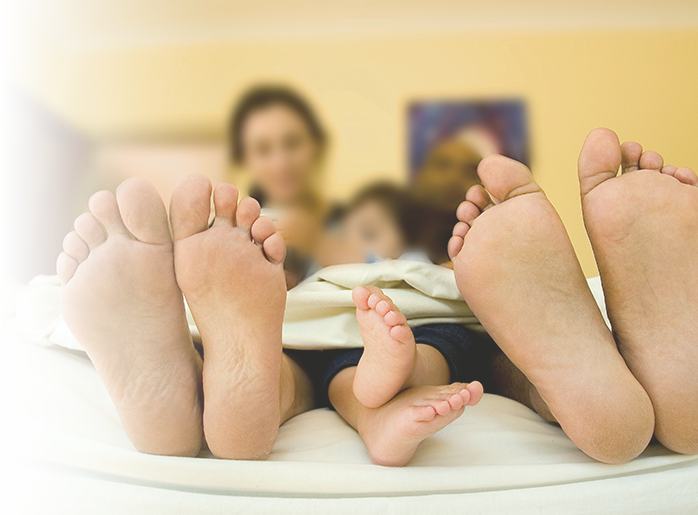Athlete’s Foot
Know More: Athlete's Foot
Trustworthy information, straight from the source. Education is the first step in an empowering healthcare plan. Learn more about athlete’s foot, from prevention to diagnosis and treatment.

Condition Overview
What is athlete’s foot?
Athlete’s foot — also called tinea pedis — is a contagious fungal infection that affects the skin on the feet and can spread to the toenails and sometimes the hands. The fungal infection is called athlete’s foot because it’s commonly seen in athletes.
Athlete’s foot isn’t serious, but sometimes it’s hard to cure. However, if you have diabetes or a weakened immune system and suspect that you have athlete’s foot, you should call your doctor immediately.
Risk Prevention
What increases your risk for athlete’s foot?
Athlete’s foot is spread when an infected person shares towels or walks barefoot in shower stalls or public locker rooms. Your risk of athlete’s foot is greater if you do not wash your feet or do not change your socks every day.
How can you prevent the spread of athlete’s foot?
- Prevent the spread of this infection to other parts of your body. When you shower, dry your groin area and other parts of your body before you dry your feet.
- Keep your feet clean and dry. Wash your feet each day and dry them well, especially between your toes. After your feet are dry, put powder on your feet and between your toes. Wear clean cotton or wool socks each day. Put your socks on first so you do not spread the infection to other areas of your body. Wear sandals, canvas tennis shoes, or other shoes that allow air to flow to your feet. This helps keep your feet dry. Do not use shoes that are tight, or made of plastic or rubber.
- Soak your feet in an astringent (drying) solution as directed if you have blisters. You may need to do this for 20 to 30 minutes, 2 times each day to help dry out the blisters.
- Wear shoes in public areas. Wear shower shoes or sandals in warm, damp areas. This includes shower stalls, near swimming pools, and locker rooms. Do not share socks or shoes. Do not use public swimming pools.
Diagnosis & Treatment Options
What are the signs and symptoms of athlete’s foot?
- Cracks or blisters
- Redness, swelling, itching, or burning
- Scaly or peeling skin
- Bad smelling feet
- Thick, dark skin on the bottoms or sides of your feet
- Thick, abnormal toenails
How is athlete’s foot diagnosed?
Your healthcare provider may be able to tell you have athlete’s foot by looking at your feet. He or she may gently scrape off some of your skin and look at the sample through a microscope. This will help the provider know the type of fungus that is causing your infection.
How is athlete’s foot treated?
Athlete’s foot is usually treated with an antifungal medicine. This medicine may be given as a cream or pill. You may need a doctor’s order for this medicine. Take the medicine until it is gone, even if your feet look like they are healed.
Preparing for Care
When should I seek immediate care for athlete’s foot?
- You have a fever or chills.
- You have red streaks going up your leg.
When should I contact my healthcare provider?
- Your infection spreads to other parts of your body.
- Your infection is not better in 14 days or is not completely gone in 90 days.
- The skin on your foot or leg is red and hot.
- You have questions or concerns about your condition or care.
